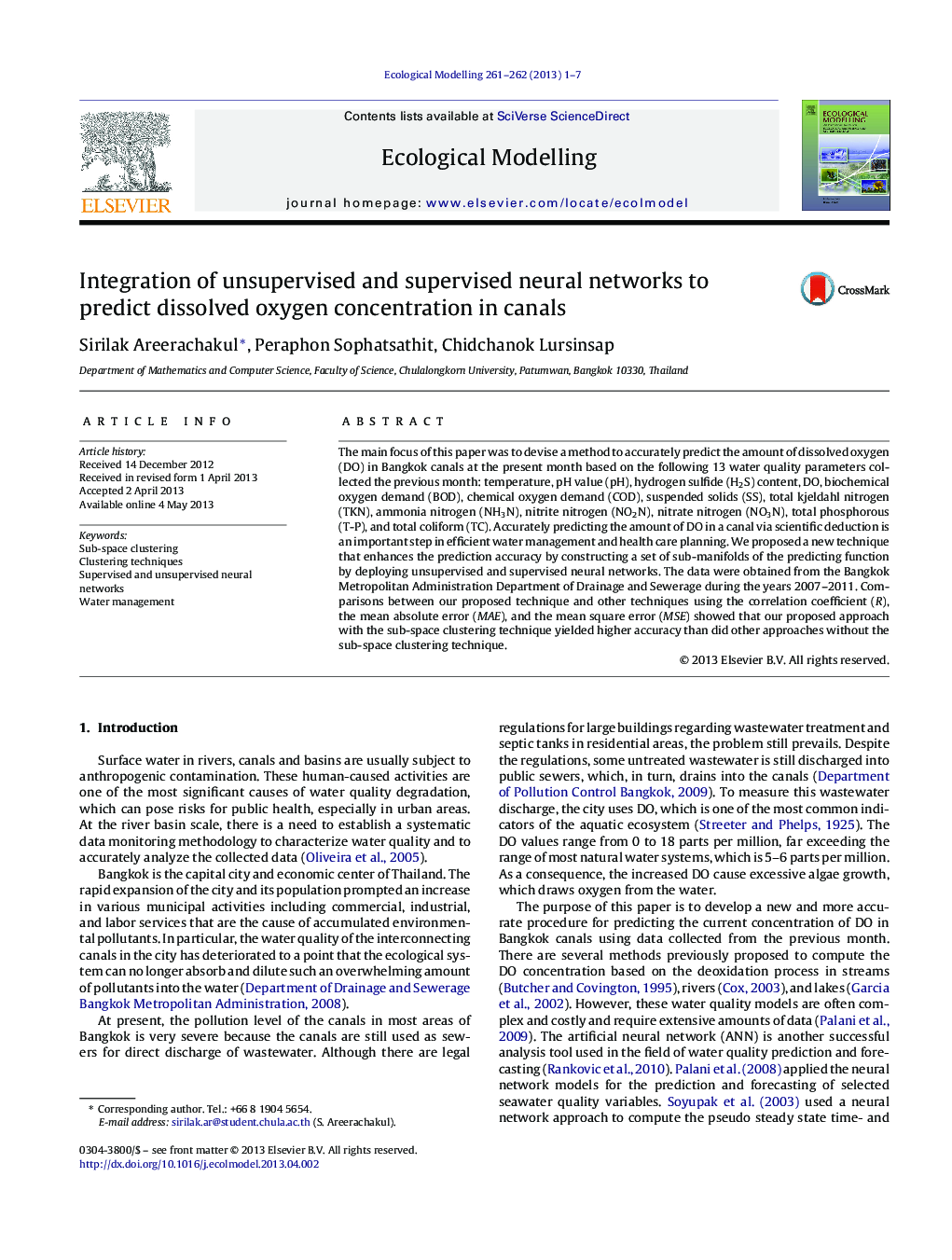| Article ID | Journal | Published Year | Pages | File Type |
|---|---|---|---|---|
| 6297140 | Ecological Modelling | 2013 | 7 Pages |
â¢Compensate the shortfalls of supervised technique in predicting DO value.â¢Cluster data and apply supervised and unsupervised ANN to improve DO prediction.â¢The technique can be applied to general water resource management plan.
The main focus of this paper was to devise a method to accurately predict the amount of dissolved oxygen (DO) in Bangkok canals at the present month based on the following 13 water quality parameters collected the previous month: temperature, pH value (pH), hydrogen sulfide (H2S) content, DO, biochemical oxygen demand (BOD), chemical oxygen demand (COD), suspended solids (SS), total kjeldahl nitrogen (TKN), ammonia nitrogen (NH3N), nitrite nitrogen (NO2N), nitrate nitrogen (NO3N), total phosphorous (T-P), and total coliform (TC). Accurately predicting the amount of DO in a canal via scientific deduction is an important step in efficient water management and health care planning. We proposed a new technique that enhances the prediction accuracy by constructing a set of sub-manifolds of the predicting function by deploying unsupervised and supervised neural networks. The data were obtained from the Bangkok Metropolitan Administration Department of Drainage and Sewerage during the years 2007-2011. Comparisons between our proposed technique and other techniques using the correlation coefficient (R), the mean absolute error (MAE), and the mean square error (MSE) showed that our proposed approach with the sub-space clustering technique yielded higher accuracy than did other approaches without the sub-space clustering technique.
